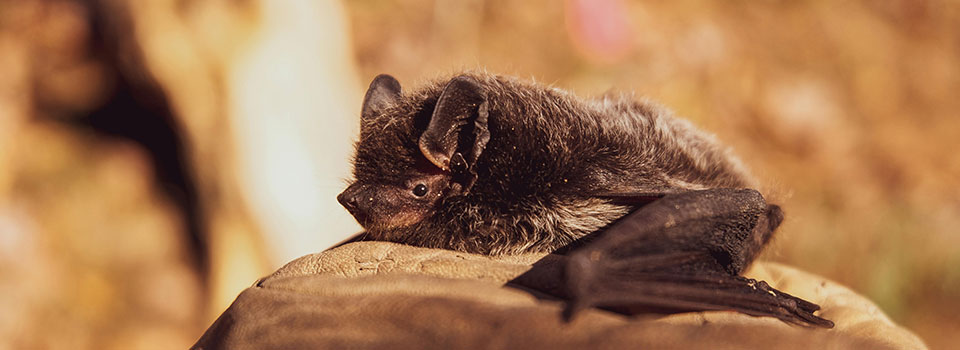
Bats come out of hibernation in May and are more active through August.
Bats in the attic? Wildlife expert says you may need to let them be for now
Homeowners may have few options until after summer, says K-State’s Ricketts
At a glance: Bats come out of hibernation beginning in May and are more active through August. K-State wildlife expert Drew Ricketts shares tips for removing the dark, flying mammals from your home.
More information: Drew Ricketts, 785-532-1949, arickett@ksu.edu
Related: Bats: Urban Wildlife Damage Control
May 17, 2024
By Pat Melgares, K-State Research and Extension news service
MANHATTAN, Kan. – It’s no coincidence that Kansas State University wildlife expert Drew Ricketts’ phone rings a bit more often this time of year with residents feeling a little bit batty.
The dark, flying mammals come out of hibernation beginning in May and are more active through August. Ricketts says he gets phone calls from “people who are also starting to detect signs that they might have bats living in the house.”
So long as the bats are not in the home’s main living space, Ricketts might suggest leaving them alone. That's because some control measures could create a bigger issue.
“If the bats are in the attic, or they’re living in the upper portion of the house, it’s really hard to go in there and actually find all of those bats, catch them effectively and try to take them back outside the house,” Ricketts said. “So, that’s not the way we do it.”
The most efficient way, he notes, is to install a ‘bat excluder’ or ‘bat valve’ in a spot where the homeowner believes the bats are getting in.
“These can be a homemade device made out of an insect type material that we staple really tightly around the entryway and then it hangs down,” Ricketts said. “The bats can get out, but they can’t figure out how to get back under the device to get back in.”
Doing so, keeps that bat out of the attic, but it may not resolve the problem. Bat babies – called pups – are often born in April or early May, and are unable to fly through at least August. If the female can’t get back in to feed its pups, they are likely going to starve to death.
“When those pups die in the attic, that creates odor issues,” Ricketts said. “It’s also a sanitary issue. So when we do have a maternal colony in the attic…as long as they’re not getting into the living space of the house, really the best thing to do is to wait until August and put those bat excluders up there so they can fly out.”
Ricketts said there are some protected species and some endangered species of bats in Kansas. For that reason, homeowners may opt to hire a certified control company to remove the bats outside the May through August timeframe.
Another reason homeowners shouldn’t attempt the job themselves: Bats can carry rabies.
“Bats have got really small mouths, and it’s very easy for a bat to bite you and you not know it,” Ricketts said. “So if you do have bats in the living space, you need to get those caught and moved out. If there is every anybody in the room that can’t say with 100% certainty that the bat has not been on me, then it’s important to collect that bat and submit it for rabies testing.”
If a bat bite is suspected, or you can’t be absolutely sure if you’ve been bitten, see a medical professional or county health department official immediately.
More information on managing wildlife is available online from K-State’s Department of Horticulture and Natural Resources.
***

K‑State Research and Extension is a short name for the Kansas State University Agricultural Experiment Station and Cooperative Extension Service, a program designed to generate and distribute useful knowledge for the well‑being of Kansans. Supported by county, state, federal and private funds, the program has county extension offices, experiment fields, area extension offices and regional research centers statewide. Its headquarters is on the K‑State campus in Manhattan. For more information, visit www.ksre.ksu.edu. K-State Research and Extension is an equal opportunity provider and employer.